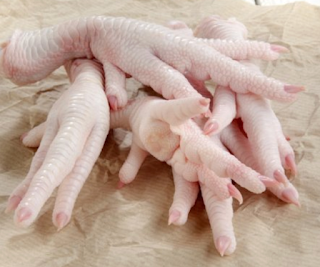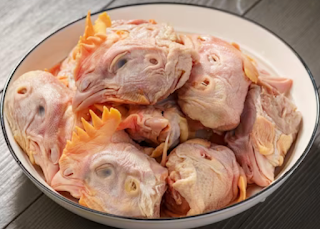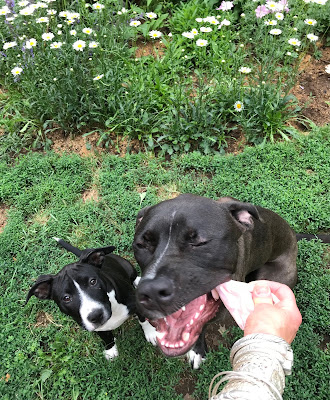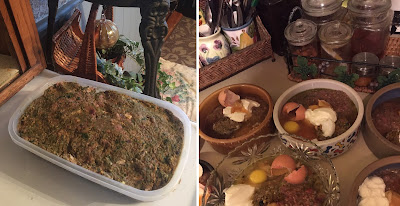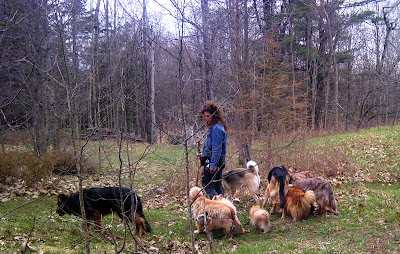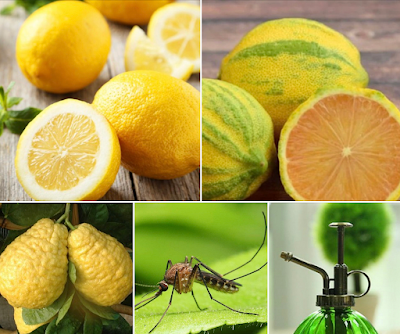How to Include Raw Meaty Bones in Your Dog and Puppy's Diet to Support Overall Health and Wellness
★ 4 min read
In this article:
- Raw Meaty Bones are an Essential Part of A Species Appropriate Diet
- Raw Meaty Bones Health Benefits
- Nutritional Value to Support Overall Health
- Bone and Joint Health Support
- Sooth Teething Discomfort
- Nature's Tooth Brush
- Appropriate Raw Meaty Bones
- Poultry, Bird, Fowl
- Small Prey
- Large Prey
- Tip, Duck Feet vs. Chicken Feet
- Tips to Enrich Your Dog and Puppy's Diet
- Safety Tips For Giving Your Dog and Puppy Raw Meaty Bones
- Rib Bones
- Load Bearing, Marrow Bones, Antlers
- How to Teach Your Dog and Puppy to Chew RMB
- Supervise
- Why Thawed, Not Frozen
- Pastured, Free Range vs. Factory Farm Sourced
- Shareable Raw Meaty Bones Chart
- Raw Meaty Bones for Cats and Kittens
1.0 Raw Meaty Bones are an Essential Part of a Species Appropriate Diet
Puppies can start gnawing on raw meaty bones at six to seven weeks of age. At this age, your puppy will enjoy pulling the meat and sinew off of the meaty bone. By ten to twelve weeks of age puppies are able to start eating the raw bone too.
My ten week old puppy, Annie has a nightly bed time snack that includes a quail egg and a raw meaty bone (RMB). Annie gets a rotation of various RMB for her evening snack including:
- Chicken feet
- Chicken neck
- Chicken wingette
- Duck feet
- Duck neck
At ten weeks of age Annie transitioned from gnawing on her RMBs, to consuming her raw meaty bones. Further below I'll provide you with tips to help your puppy properly chew RMB.
2.0 Raw Meaty Bone Health Benefits for Puppies and Dogs
2.1 Nutritional Value to Support Overall Health
Raw meaty bones are an essential part of a species appropriate diet for puppies and dogs. RMB provide vital nutrients for overall health. As an example let’s take a look at raw chicken feet. Raw chicken feet are a good source of:
- Animal protein (amino acids)
- Bone marrow
- Collagen
- Chondroitin
- Glucosamine
- Fiber
- Sinew
Fat
- Omega-3 fatty acids
- Omega-6 fatty acids
Vitamins and minerals including:
- Vitamin A
- B2 (riboflavin)
- B9 (folate)
- B12
- Choline
- Calcium
- Iron
- Magnesium
- Phosphorus
- Potassium
- Selenium
- Zinc
The major component of protein in chicken feet comes from collagen (70%). Collagen is a fibrous protein that holds the body together. The body uses collagen to support:
- Blood health
- Bone health
- Brain health
- Gut health
- Muscle and joint health
- Skin health
2.2 Bone and Joint Health Support
Poultry feet and necks are an excellent source of collagen, glucosamine and chondroitin. Include these raw meaty bones in the diet to support:
- Musculoskeletal growth
- Long-term health of bones, joints and ligaments
2.3 Soothe Teething Discomfort
When your puppy adult teeth begin to emerge puppy’s gums can be very uncomfortable. Gnawing on a raw meaty bone will help relieve puppy's discomfort.
Give puppy thawed raw meaty bones, not frozen. The reasons for this are provided further below.
2.4 Nature’s Toothbrush
You’ll also be helping puppy get a good start on long-term oral health. Raw meaty bones are also called “nature’s toothbrush”.
A raw meaty bone daily or three to four times a week helps to keep your puppy and adult dog's teeth scrubbed clean naturally.
3.0 Appropriate Raw Meaty Bones for Puppies and Dogs
A list of edible bones suitable for puppies and dogs...
3.1 Poultry, Bird, Fowl RMB
- Chicken
- Cornish hen
- Duck
- Guinea fowl
- Pheasant
- Turkey for older large breed puppies, adult large and x-large breed dogs
- Don't cut the nails off of poultry feet. The nails will not harm your puppy or dog's mouth, or digestive tract.
- The nails are completely digestible, and contain valuable nutrients.
Poultry, Fowl Heads
- Chicken
- Cornish hen
- Duck
- Guinea fowl
- Pheasant
- Turkey
Poultry, Fowl Leg (drumstick)
- Chicken
- Cornish hen
- Duck
- Guinea Fowl
Poultry, Fowl Neck
- Chicken
- Cornish hen
- Duck
- Guinea fowl
- Turkey (cut in sections for puppies and small breed dogs).
Poultry, Fowl *Wings
- Chicken
- Cornish hen
- Duck
- Guinea fowl*Wings: wing tip, wingette (middle section of the wing), drumette (large section of the wing)
Poultry, Fowl Whole or Part Carcass
- Chicken
- Cornish Hen
- Quail
- Pigeon
- Beaver tail
3.3 Large Prey (Ruminants, Cloven Hoof) RMB
Head
- Alpaca
- Goat
- Lamb
- Llama
- Pig
- Wild Boar
Neck
- Alpaca
- Goat
- Lamb
- Llama
- Pig
- Wild Boar
Ribs
- Goat
- Lamb
- Pig
- Wild Boar
Tails
- Ox tail
- Pig tail
- Wild Boar tail
Trachea
*before you give to your dog, split trachea vertically down the centre to avoid choking hazard
- Alpaca
- Beef
- Buffalo (Bison)
- Deer
- Goat
- Lamb
- Llama
- Pig
- Venison
- Wild Boar
- etc.
3.4 Tip, Duck Feet vs. Chicken Feet
Duck feet are denser than chicken feet, and can be a little more difficult for a puppy to properly
chew.
Here’s a tip to help your puppy, or kitten:
- Use a pair of poultry sheers to make a few clean, horizontal cuts along the length of the duck foot.
- This makes it easier for a ten to twelve week old puppy to properly chew the duck foot bone.
- See the
photo just below.
4.0 Tips to Enrich Your Dog and Puppy's Diet
Allow puppy to pull most of the meat and sinew off of the bone. Then take the bone away from puppy. Save the gnawed on bone by placing it in the freezer. When you've collected enough gnawed on bones, use the bones to make bone broth or bone broth gelatin for puppy.
.1 Bone Broth Recipe
- For the recipe go here.
.2 Bone Broth Gelatin Recipe
- For the recipe go here.
5.0 Safety Tips for Giving Raw Meaty Bones to Your Puppy and Dog
5.1 Rib Bones
When giving your puppy raw meaty ribs always give 2 to 4 ribs attached together. Single ribs are a choking hazard. If your puppy is young, allow your pup to chew the meat off of the rib bone, then take the bone away. You can use the bone to make bone broth or bone broth gelatin. Once your puppy is a little older pup will be able to consume the whole rib bone.
5.2 Load Bearing Bones, Marrow Bones, Antlers
I do not recommend giving your puppy or dog marrow bones or other load bearing bones and antlers. Leg bones from ruminants/cloven hoof animals and large poultry e.g. emu, turkey, ostrich. Adhere to the supple load bearing bones provided in the chart and listing further above.
These load bearing bones and antlers are not edible flexible bones, instead they are very dense bones. These load bearing bones (including marrow bones) and antlers are a leading cause of oral cavity injury and trauma including: broken, chipped and fractured teeth, jaw injuries, etc.
These load bearing bones and antlers can splinter. Unlike the supple edible bones recommended in this article, the splinters from load bearing bones can cause damage to the upper and lower gastrointestinal track.
These load bearing bones and antlers are not edible flexible bones, instead they are very dense bones. These load bearing bones (including marrow bones) and antlers are a leading cause of oral cavity injury and trauma including: broken, chipped and fractured teeth, jaw injuries, etc.
These load bearing bones and antlers can splinter. Unlike the supple edible bones recommended in this article, the splinters from load bearing bones can cause damage to the upper and lower gastrointestinal track.
A dog's (or puppy's) jaw can become lodged and trapped in the large openings at either end of the marrow bone. This situation is an emergency and requires surgical intervention.
Marrow bones also contain a significant amount of bone marrow. Bone marrow consumed in small amounts from appropriate raw meaty bones is beneficial. However the large amount of marrow present in bone marrow bones, can exceed the tolerable amount of marrow (a rich, fatty substance) resulting in inflammation of the pancreas. This can trigger acute pancreatitis, a life threatening condition.
Load bearing bones can be used for making bone broth or bone broth gelatin.
Marrow bones also contain a significant amount of bone marrow. Bone marrow consumed in small amounts from appropriate raw meaty bones is beneficial. However the large amount of marrow present in bone marrow bones, can exceed the tolerable amount of marrow (a rich, fatty substance) resulting in inflammation of the pancreas. This can trigger acute pancreatitis, a life threatening condition.
Load bearing bones can be used for making bone broth or bone broth gelatin.
5.3 Teach Your Dog and Puppy to Chew RMB
To teach your puppy or adult dog to properly chew raw meaty bones:
- Hold one end of the RMB firmly with your hand or with a pair of plastic pliers.
- If your pup is an aggressive chewer using plastic pliers is a must to help teach puppy and adult dogs to slow down, relax and chew.
In the photo below, I'm holding a duck foot for Willoughby (my older puppy), while Annie (my younger puppy) waits for her duck foot.
5.4 Supervise
Always be present when your pup is chewing raw meaty bones. This is a safety precaution that applies to feeding RMB to puppies and adult dogs.
5.5 Why Thawed, Not Frozen
Raw meaty bones should be thawed in the refrigerator and then given to your puppy or dog.
Don't give frozen raw meaty bones to your companion animal.
- Consuming frozen raw meaty bones (frozen food) is:
- Disruptive to the neurological system.
- Forces the body to waste energy in order to digest the food.
- Forces core body temperature to increase.
- Can cause nerve pain in the oral cavity and injury.
5.6 Pastured, Free Range vs. Factory Farm Sourced
Animals
(e.g. chicken, cows, ducks, pigs, turkeys) raised in *concentrated
animal feeding operations (CAFO) spend their short life, living
in miserable conditions. CAFO **animals are fed a toxic, species
inappropriate diet. Many of these toxins (e.g. lead and other heavy
metals, drug residue) remain in the animal's flesh and bones after
slaughter. I recommend broth and bone broth not be made with factory
farm sourced animal flesh and bones.
The best choice are bones sourced from
pastured, free-range or organic pasture, free range. The second best
choice is bones sourced from organic raised animals.
Learn more here,
about intensively farmed animals, how animal protein, fat and bones
sourced from these animals can adversely effect the health of your dog
and cat.
* also known as: factory farms, industrial farms
** also known as: factory farm-raised, intensively farmed
6.0 Shareable Chart - Raw Meaty Bones for Puppies and Adult Dogs
7.0 Raw Meaty Bones for Cats and Kittens
Holistic Diet, Nutrition, Wellness Services Tailored to Your Individual Dog and Cat
For information about my holistic diet, nutrition and wellness services, visit my holistic wellness services page.
Maintain good health | Address acute and chronic health issues | Pre and post surgery support and recovery
My holistic wellness services are available worldwide via video consultation.
🌎 USA | Canada | UK | Europe | Australia | New Zealand | Asia | South and Central America | Africa | UAE
📱FaceTime | Facebook | Skype | WhatsApp
To set-up your holistic wellness consultation get in-touch via email, go to my contact me page.
Holistic Behavioral Services for Your Dog
For information about my holistic behavioral services, visit my holistic behavioral services page.
For dogs of all ages, sizes and breeds.
My behavioral services are available worldwide via video consultation.
🌎 USA | Canada | UK | Europe | Australia | New Zealand | Asia | South and Central America | Africa | UAE
📱FaceTime | Facebook | Skype | WhatsApp
To set-up your holistic behavioral session get in-touch via email, go to my contact me page.
Affiliations to Companies
✓ None.
✓ I don't sell food, supplements, or other products.
✓ I'm not aligned with any companies.
Article and graphics by Karen Rosenfeld.



